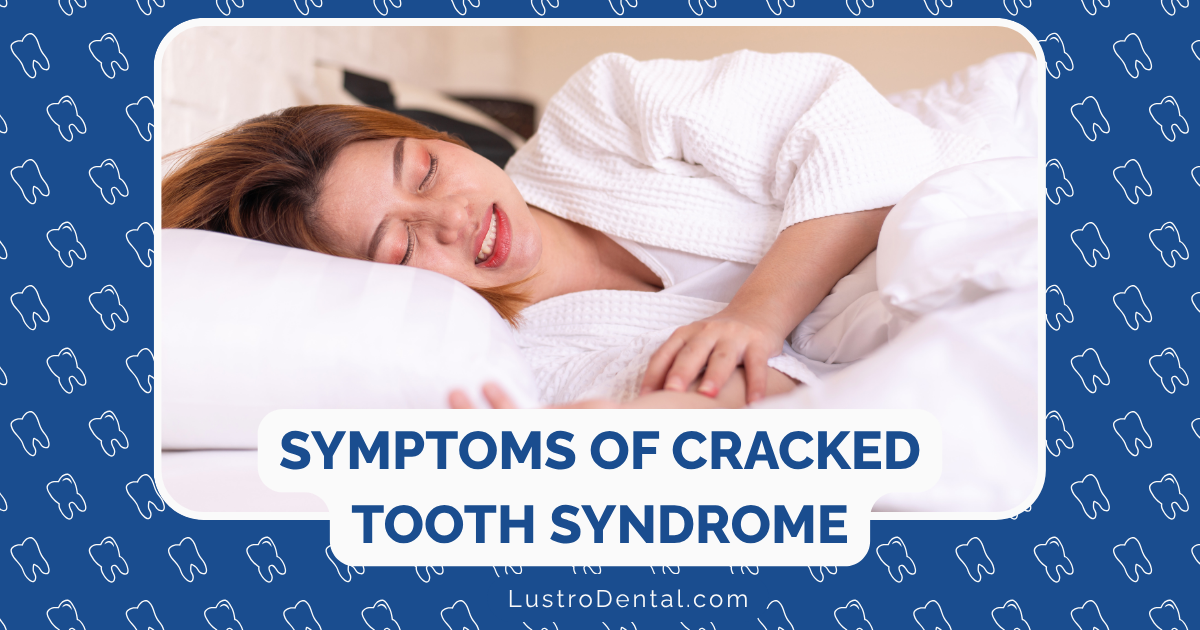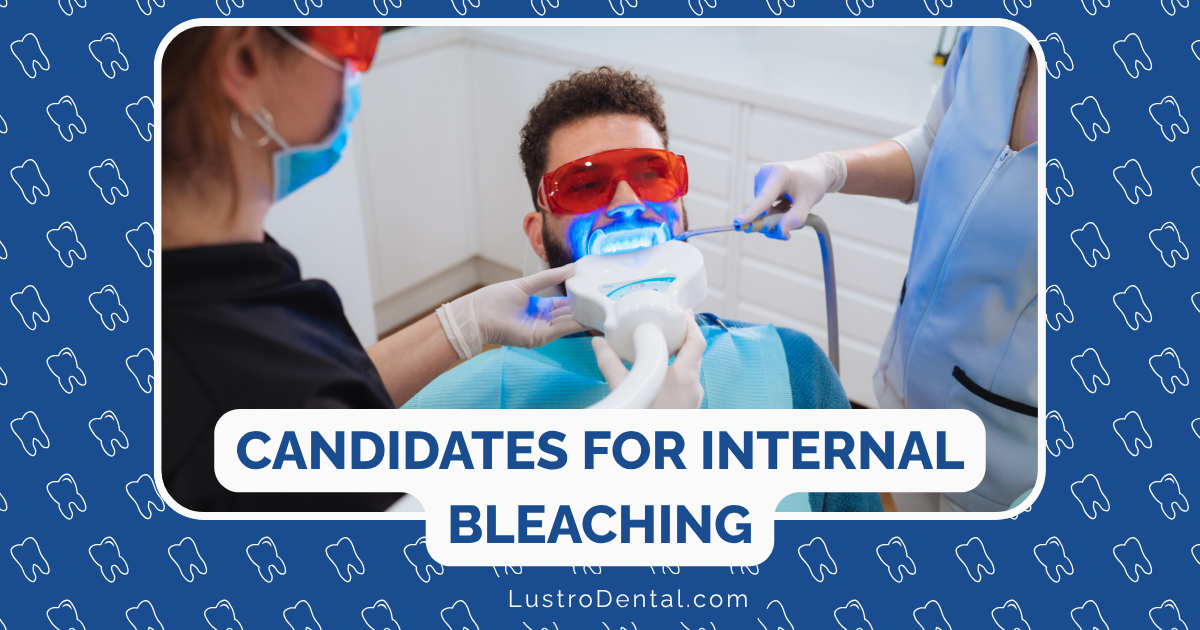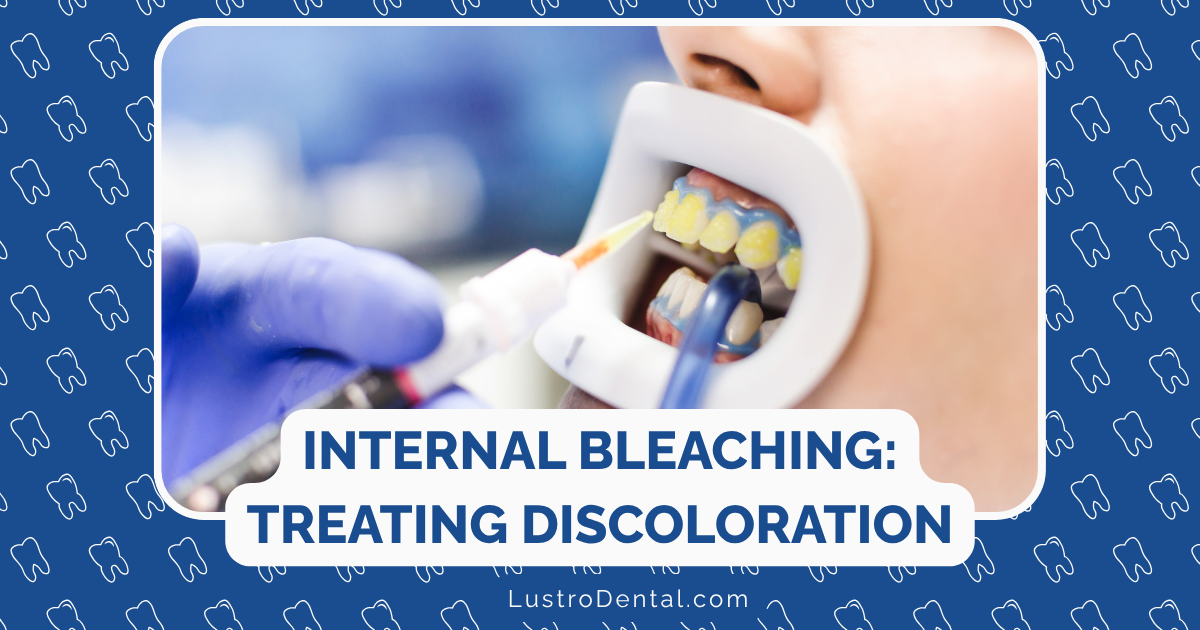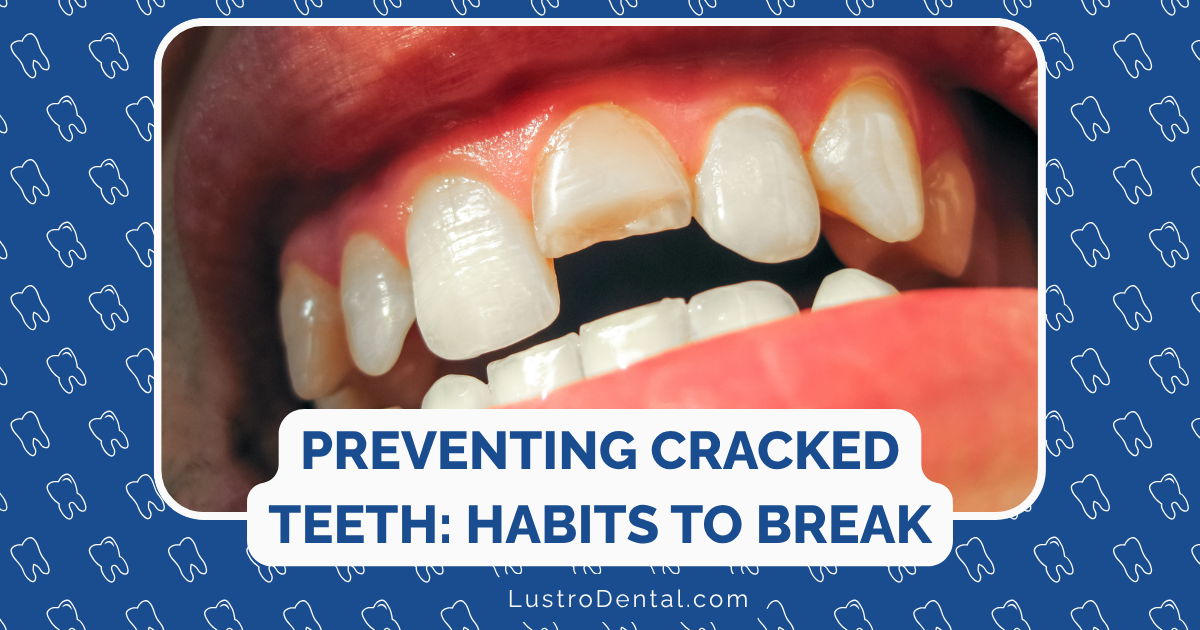The Connection Between Stress, Grinding, and Cracked Tooth Syndrome

In my years of working with dental patients, I’ve noticed a fascinating and concerning pattern: during times of heightened stress—economic downturns, pandemic periods, or personal crises—we see a significant uptick in cracked teeth. This isn’t coincidental. There’s a direct and scientifically-backed connection between the stress you experience, the unconscious grinding of your teeth (bruxism), and the development of cracked tooth syndrome.
Understanding this connection is the first step toward protecting your dental health during stressful periods. In this comprehensive guide, we’ll explore the intricate relationship between your mental state and your dental health, and provide practical strategies to break this damaging cycle.
The Stress Epidemic and Your Teeth
Before diving into the dental aspects, let’s acknowledge an uncomfortable truth: we’re living in an increasingly stressful world. According to the American Psychological Association, stress levels have been trending upward for years, with approximately 75% of adults reporting moderate to high stress levels in recent surveys.
Dr. Sarah Johnson, neuropsychologist at University Stress Research Institute, notes: “What many people don’t realize is that psychological stress isn’t just ‘in your head’—it manifests physically throughout your body, including your mouth and jaw muscles.”
This physical manifestation often takes the form of bruxism—the medical term for teeth grinding and clenching—which can lead to a cascade of dental problems, culminating in cracked tooth syndrome.
Understanding Bruxism: The Physical Response to Psychological Stress
What Exactly Is Bruxism?
Bruxism is the involuntary grinding, gnashing, or clenching of teeth. It comes in two main forms:
Awake Bruxism: Occurs during waking hours, often during periods of concentration, anger, or anxiety. Many people are unaware they’re doing it until someone points it out or they notice jaw soreness.
Sleep Bruxism: Happens during sleep, classified as a sleep-related movement disorder. It’s particularly damaging because:
- It’s completely unconscious
- The force exerted can be up to three times greater than conscious clenching
- It often goes undiagnosed for years
- It frequently occurs during REM sleep, a critical phase for mental health
Recent research published in the Journal of Oral Rehabilitation found that approximately 8-10% of the population suffers from severe bruxism, with higher rates (up to 31% for awake bruxism) in those experiencing chronic stress.
The Neurological Pathway: How Stress Triggers Grinding
The connection between stress and teeth grinding isn’t just behavioral—it’s neurochemical. Here’s what happens in your body when stress triggers bruxism:
- Stress Activation: When you experience stress, your body activates the hypothalamic-pituitary-adrenal (HPA) axis, your primary stress response system.
- Cortisol Release: This activation increases cortisol (the “stress hormone”) in your bloodstream.
- Sympathetic Nervous System Response: Your “fight-or-flight” response kicks in, increasing muscle tension throughout your body, including your jaw muscles.
- Neurotransmitter Imbalance: Stress alters levels of neurotransmitters like dopamine and serotonin, which play roles in muscle control and movement.
- Trigeminal Nerve Activation: The mesencephalic trigeminal nucleus becomes hyperactive, leading to increased jaw muscle tone.
- Unconscious Grinding: These physiological changes culminate in the unconscious grinding or clenching of teeth, especially during sleep when conscious control is absent.
Dr. Michael Chen, neurodentist at Advanced Dental Neuroscience Center, explains: “It’s a vicious cycle. Stress causes grinding, which leads to dental problems and pain, creating more stress—and the cycle continues. Breaking this cycle requires addressing both the psychological stressors and their physical manifestations.”
From Grinding to Cracking: The Progression of Dental Damage
The journey from stress to a cracked tooth follows a predictable path:
Stage 1: Initial Enamel Damage
When you grind your teeth, the excessive forces begin to wear away the protective enamel. This stage may be characterized by:
- Flattened or worn tooth surfaces
- Small lines in the enamel called “craze lines”
- Mild sensitivity to temperature
- Slight discomfort when biting
These early warning signs are often missed or dismissed as normal aging of teeth.
Stage 2: Deeper Structural Damage
As grinding continues, the damage progresses beyond the enamel:
- Microfractures develop deeper in the tooth structure
- Existing fillings may become compromised
- Cusps (the pointed parts of teeth) may begin to weaken
- Sensitivity increases, particularly to cold and sweet
At this stage, the damage is still largely repairable with conservative treatments.
Stage 3: Cracked Tooth Syndrome
With ongoing grinding, those microfractures eventually develop into true cracks:
- Cracks extend from the chewing surface toward the root
- Pain becomes more pronounced, especially when biting or releasing bite pressure
- The tooth may become sensitive to multiple stimuli
- Discomfort becomes more unpredictable and difficult to localize
According to a study in the Journal of Endodontics, the forces generated during sleep bruxism can exceed 250 pounds per square inch—more than enough to crack even healthy teeth over time.
Stage 4: Complete Fracture
Left untreated, cracked tooth syndrome can progress to:
- Split tooth (complete separation of tooth segments)
- Vertical root fracture
- Pulp exposure and infection
- Tooth loss
Dr. Lisa Wong, endodontist at University Dental Institute, notes: “By the time many patients seek treatment for a cracked tooth, they’ve been grinding for years. The crack didn’t happen overnight—it’s the culmination of a long-term stress response manifesting in their mouth.”
Identifying the Problem: Signs You Might Be at Risk
Stress Indicators
Consider whether you’re experiencing these common stress symptoms:
- Persistent worry or anxiety
- Sleep disturbances
- Irritability or mood changes
- Difficulty concentrating
- Muscle tension, particularly in the neck and shoulders
- Headaches, especially upon waking
Bruxism Indicators
Look for these signs of teeth grinding:
- Morning jaw soreness or fatigue
- Temporal headaches, particularly upon waking
- Worn or flattened teeth
- Increased tooth sensitivity
- Cheek damage from biting
- Indentations on the tongue
- A loved one reporting hearing grinding sounds during your sleep
Cracked Tooth Syndrome Indicators
Watch for these symptoms of cracked tooth syndrome:
- Sharp pain when biting down on certain foods
- Pain upon release of biting pressure
- Sensitivity to temperature extremes
- Discomfort when eating sweet or acidic foods
- Pain that comes and goes, making it difficult to identify the specific tooth
- Discomfort in a general area rather than a specific tooth
The Psychological Dimension: Types of Stress That Trigger Grinding
Not all stress affects your teeth equally. Research has identified several psychological factors particularly associated with bruxism:
Anxiety Disorders
People with generalized anxiety disorder, panic disorder, or social anxiety are up to three times more likely to experience bruxism. The constant state of worry keeps stress hormones elevated, maintaining muscle tension even during sleep.
Perfectionism and Type A Personalities
Individuals with perfectionist tendencies or Type A personality traits (competitive, high-achieving, impatient) show higher rates of bruxism. The constant drive to achieve and control manifests physically in jaw clenching.
Work-Related Stress
Job strain, particularly roles with high demands and low control, correlates strongly with bruxism. A 2022 study in the Journal of Occupational Health found that workers in high-stress occupations were twice as likely to experience sleep bruxism compared to those in lower-stress positions.
Post-Traumatic Stress Disorder (PTSD)
PTSD creates a state of hyperarousal in the nervous system. This chronic activation of the fight-or-flight response leads to persistent muscle tension, including in the jaw, resulting in severe bruxism in many sufferers.
Adaptive Stress Response
For some individuals, bruxism serves as an unconscious coping mechanism—a physical outlet for emotional tension. This “adaptive” response, while providing momentary stress relief, causes long-term dental damage.
Breaking the Cycle: A Comprehensive Approach
Effectively addressing the stress-grinding-cracking cycle requires a multi-faceted approach:
1. Stress Management Strategies
Mindfulness and Meditation
Regular mindfulness practice has been shown to reduce bruxism frequency by addressing its root cause. A 2023 study in the Journal of Dental Research found that an 8-week mindfulness program reduced nighttime grinding episodes by up to 50% in chronic bruxers.
Techniques to try:
- Guided meditation apps focused on stress reduction
- Progressive muscle relaxation, particularly focusing on the jaw
- Mindful breathing exercises before bed
- Body scan meditations to identify and release tension
Cognitive Behavioral Therapy (CBT)
CBT helps identify and reframe stress-inducing thought patterns. Working with a therapist can help develop healthier responses to stressors that trigger grinding.
Physical Exercise
Regular physical activity reduces stress hormones and promotes better sleep quality, indirectly reducing bruxism. Aim for at least 30 minutes of moderate exercise most days.
Sleep Hygiene
Poor sleep and bruxism have a bidirectional relationship—each worsens the other. Improving sleep hygiene can help break this cycle:
- Maintain a consistent sleep schedule
- Create a relaxing bedtime routine
- Limit screen time before bed
- Keep your bedroom cool, dark, and quiet
- Avoid caffeine and alcohol near bedtime
2. Physical Protection Strategies
Custom Night Guards
A properly fitted dental night guard won’t stop you from grinding, but it will protect your teeth from damage. Dr. Johnson emphasizes: “A custom-made night guard from your dentist is far superior to over-the-counter options. It’s precisely fitted to your bite, more comfortable, more durable, and ultimately more effective.”
Daytime Awareness Training
For awake bruxism, increasing awareness is key:
- Set regular reminders to check jaw position
- Practice the “lips together, teeth apart” position
- Place visual cues in your environment as reminders
- Use smartphone apps designed to increase awareness of clenching
Botulinum Toxin (Botox) Injections
For severe cases of bruxism that don’t respond to other treatments, Botox injections into the masseter muscles can reduce their strength and activity. This approach has shown promising results in reducing grinding frequency and intensity.
3. Dental Interventions for Existing Damage
If you’ve already developed cracked tooth syndrome, prompt treatment is essential:
For Minor Cracks (Craze Lines)
- Monitoring by your dentist
- Possible smoothing of rough edges
- Adjustment of bite if necessary
For Moderate Cracks
- Dental bonding to seal the crack
- Onlay or crown to protect the tooth from further damage
- Occlusal adjustment to redistribute biting forces
For Severe Cracks
- Root canal therapy if the crack extends into the pulp
- Crown placement to prevent crack propagation
- In some cases, extraction and replacement may be necessary
4. Lifestyle Modifications
Several lifestyle factors can exacerbate bruxism and should be addressed:
Reduce Stimulants
- Limit caffeine, particularly in the afternoon and evening
- Avoid nicotine, which increases muscle activity
- Moderate alcohol consumption, which disrupts sleep architecture
Dietary Considerations
- Limit hard, crunchy foods that require excessive chewing
- Avoid chewing gum, which reinforces jaw muscle activity
- Stay hydrated, as dehydration can increase muscle tension
Posture Improvement
- Poor posture, particularly forward head posture, increases jaw muscle strain
- Regular stretching and strengthening exercises for the neck and shoulders
- Ergonomic adjustments to workstations
Special Considerations for Different Life Stages
Children and Adolescents
Bruxism is common in children, with prevalence rates as high as 38%. While many children outgrow it, stress-related grinding can persist and cause damage to both primary and permanent teeth.
Signs to watch for:
- Grinding sounds during sleep
- Complaints of morning jaw pain or headaches
- Worn tooth surfaces noted by dentist
- Changes in behavior or increased anxiety
Approaches for children:
- Address sources of stress and anxiety
- Establish calming bedtime routines
- Consider a custom-made night guard for older children
- Consult with a pediatric dentist for appropriate interventions
Adults in High-Stress Careers
Certain professions show higher rates of bruxism, including:
- Healthcare workers
- First responders
- Legal professionals
- Finance industry workers
- Entrepreneurs and business owners
For these individuals, proactive measures are essential:
- Regular stress-reduction practices incorporated into daily routines
- Preventive use of night guards, even before damage is evident
- More frequent dental check-ups to monitor for early signs of damage
- Workplace stress management programs
Older Adults
As we age, our teeth become more susceptible to cracking due to:
- Accumulated wear and stress over decades
- Age-related changes in dentin and enamel structure
- History of dental work that may weaken tooth structure
- Medication side effects that can increase grinding or reduce saliva
Considerations for older adults:
- More frequent dental evaluations
- Softer diet if teeth show signs of significant wear
- Addressing dry mouth, which can increase risk of tooth damage
- Evaluation of medications that may contribute to bruxism
The Future of Treatment: Emerging Approaches
Research into the stress-bruxism-cracking connection continues to evolve, with several promising developments:
Biofeedback Technology
Wearable devices that detect jaw muscle activity and provide real-time feedback are showing promise in reducing bruxism episodes. These devices can vibrate or emit sounds when grinding begins, training the brain to reduce the behavior even during sleep.
Pharmacological Approaches
Research is exploring medications that target the neurological pathways involved in bruxism, including:
- Low-dose muscle relaxants specifically for jaw muscles
- Medications that modulate dopamine and serotonin pathways
- Novel anti-anxiety medications with fewer side effects
Advanced Imaging for Early Detection
New diagnostic technologies allow for earlier detection of microfractures before they develop into symptomatic cracks:
- Optical coherence tomography (OCT) can detect cracks as small as 15 micrometers
- Digital bite analysis can identify abnormal force patterns
- AI-enhanced radiography can detect subtle changes in tooth structure
Personal Action Plan: Steps to Take Today
If you suspect the stress-grinding-cracking cycle is affecting you, here are immediate steps to take:
- Schedule a dental evaluation: Mention your concerns about grinding and cracking specifically.
- Begin a stress journal: Track stressors and note any corresponding jaw pain or dental discomfort.
- Implement a basic relaxation routine: Start with 5-10 minutes of deep breathing or meditation before bed.
- Check your jaw position throughout the day: Set reminders to ensure your teeth aren’t touching when you’re not eating.
- Discuss a night guard with your dentist: Don’t wait until damage is severe to implement this protection.
- Evaluate your sleep environment: Make changes to promote deeper, more restful sleep.
- Consider professional support: If stress is overwhelming, speaking with a mental health professional can provide valuable coping strategies.
Final Thoughts: Breaking the Cycle for Good
The connection between stress, grinding, and cracked tooth syndrome represents a perfect example of the mind-body relationship in health. By understanding this connection, you can take proactive steps to protect your dental health even during life’s most stressful periods.
Remember that addressing this issue requires patience and consistency. The habits and physiological responses that lead to grinding often develop over years, and retraining your body and mind takes time. However, with the right approach, you can break the cycle and preserve both your dental health and your peace of mind.
Have you noticed a connection between stressful periods in your life and dental problems? Share your experience or questions in the comments below.







